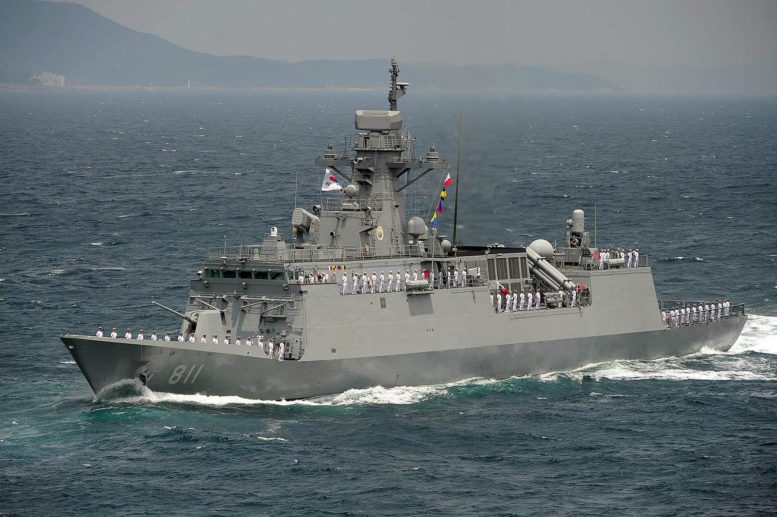INTRODUCTION. The Philippine National Defense has signed a contract with Hyundai of South Korea for the construction of two units of Incheon Class Frigate last 24-October-2016 at the cost of USD 337M to modernize the capability of surface combatants of the Philippine Navy.
WHY A FRIGATE? A frigate represents lower investment in terms of cost and displacement compared with a full-size destroyer, making frigates very attractive to many navies. Frigates attain almost the same effective combat capabilities in anti-surface, anti-submarine and anti-air warfare but with lower operating and maintenance costs.
TECHNICAL SPECIFICATION VS CIRCULAR OF REQUIREMENT AS TERMS OF REFERENCE. For a navy acquiring modern ship technology for the first time using Technical Specification could result in some technical and financial risk to the program for lack of experience as it tends to dictate to the shipbuilder what to do. It is safer to use the Circular of Requirements (COR) to tell the shipbuilder what we want. These are expressed in generic terms and the shipbuilder could use various options of approach in the design with a wider horizon in terms of capability and cost trade-offs.
LESSON LEARNED FROM RECENT HISTORY OF WAR AT SEA. Recent history in the war at sea (as referenced below) have shown that a modern warship with sophisticated active defense measures can and will be badly damaged in combat because of poor systems reliability (maintenance, state of training of personnel, equipment and outdated doctrine).
PERSIAN GULF WAR AT SEA IN 1987
Two US Navy Frigates, the USS Stark FFG-31 on 17 May 1987 hit by Exocet AM 39 anti-ship missile launched from mirage F-1 fighter and USS Roberts FFG-58 hit by a naval mines on 14 April 1988.
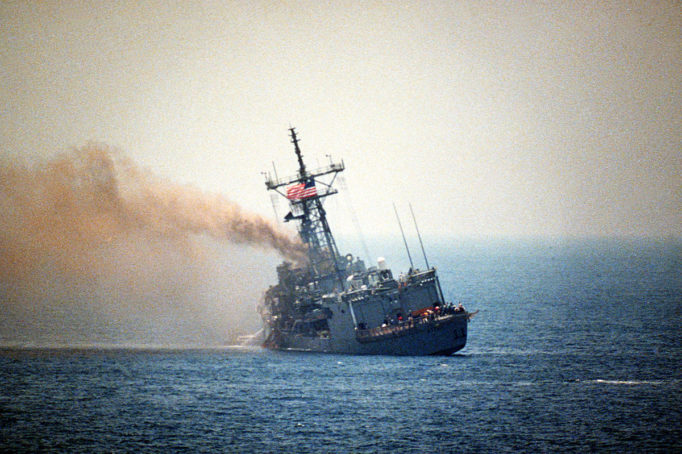
USS Stark FFG-31
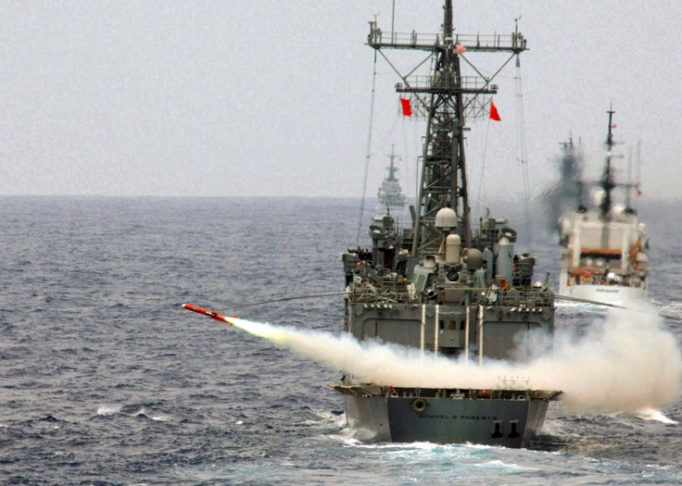
USS Roberts FFG-58
USS Cole DDG-67: a guided missile destroyer attacked by Al-Queda Terrorist on 12-Oct-2000 while refueling at Port of Aden with two suicide terrorists aboard a fiberglass boat with 130-180 kgs of shaped charged explosive.
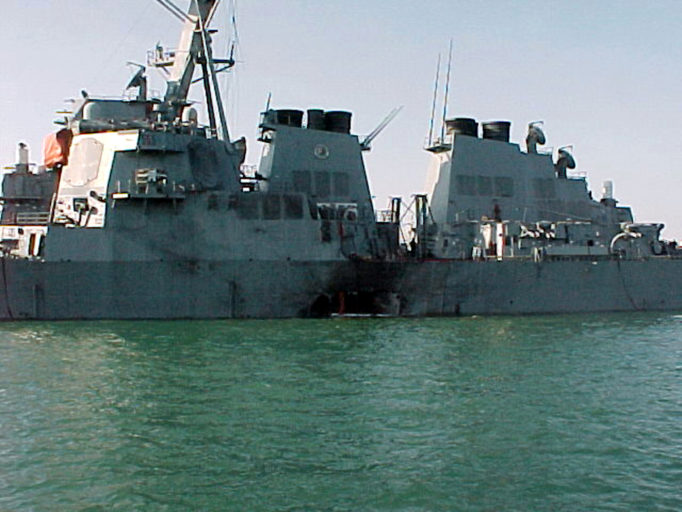
USS Cole
FALKLAND WAR AT SEA IN 1982
HMS Sheffield D80: a Royal Navy guided-missile destroyer hit by Exocet AM 39 anti-ship missile on 4-May-1982 from a super Etendard fighter of the Argentine Navy.
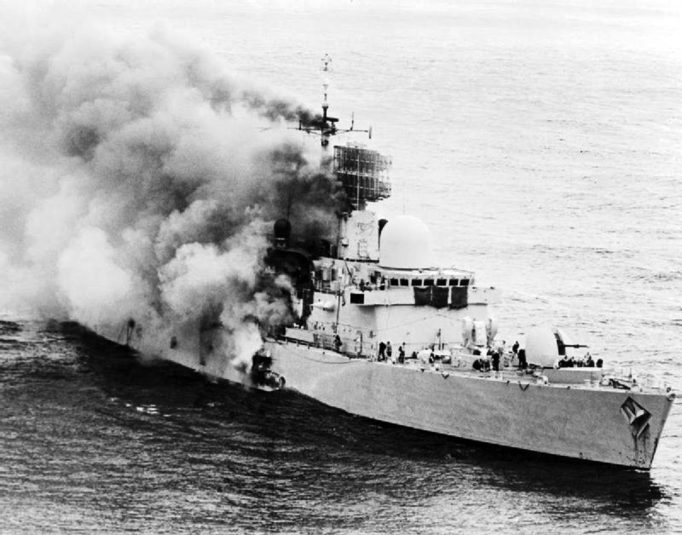
HMS Sheffield D80
HMS Ardent F184: a Royal Navy frigate hit by two bombs from A-4B Skyhawk of the Argentine Airforce on 21-May-1982.
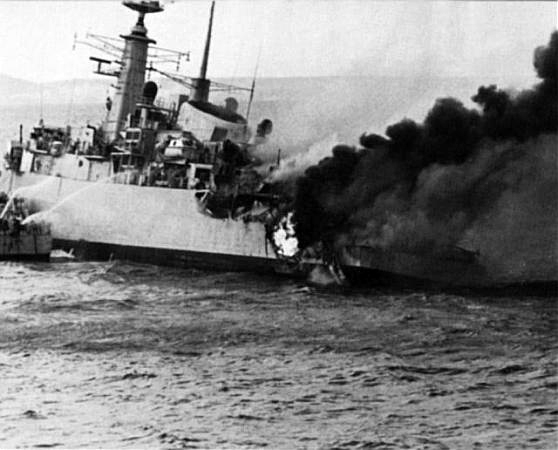
HMS Ardent F184
HMS Antelope (F170): a Royal Navy type 21 frigate hit by bombs from Skyhawk of the Argentine Airforce and sunk on 23-May-1982.
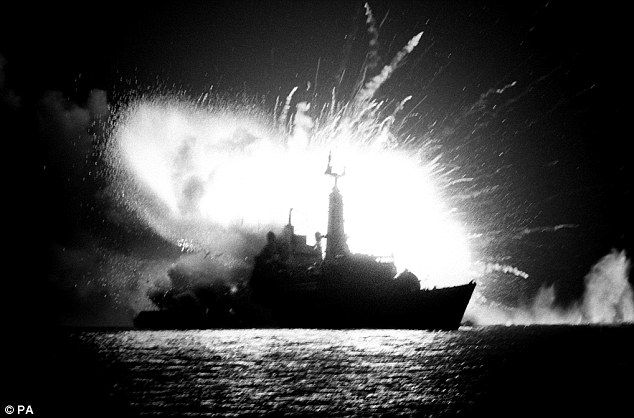
HMS Antelope F170
HMS Coventry (D118): a Royal Navy guided-missile destroyer hit by bombs on 25-May-1982 from an A-4 Skyhawk fighter aircraft of the Argentine Airforce.
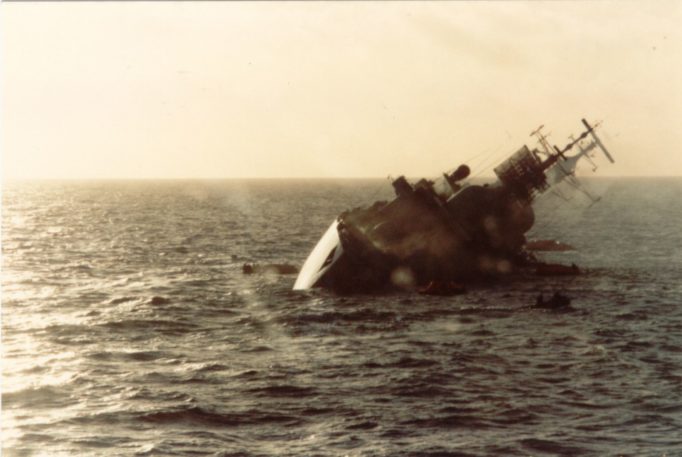
HMS Coventry D118
Effect of a successful attack on a warship can be basically divided into three (3) phases
- Primary Weapons Effect. This consists of kinetic energy, blast, fragmentation, shock wave, whipping etc. typically from ASM hitting the center of the large cross section of the ship. Torpedoes and mines can create underwater explosions lifting the ship from the water, breaking the ship into parts. Naval Gunfire with armor-piercing shell/high explosive incendiaries could penetrate the hull’s inner section and explode at the interior section of the ship.
- Secondary Weapons Effect. In the aftermath of an attack, a large portion of the lethality is the ability to create a ball of fire from the exploding ordnance and munitions at the magazine room onboard, spread of smoke, confusion, and dead bodies everywhere.
- Tertiary Weapons Effect. The principal hazard to the ship could be a total loss when the ship becomes dead in the seaway due to power disruptions, flooding, inoperable pumps, damaged engine room, loss of steerage and propulsion, bridge and combat information center (CIC), collapse of the superstructures, before capsizing and sinking to the bottom of the sea. The last ditch defense is damage control, which would depend on how fast the damages can be repaired to prevent the ship from sinking to Davy Jones Locker at the bottom of the sea.
CIRCULAR OF REQUIREMENTS AND TECHNICAL EVALUATION OF A WARSHIP
A Modern Warship must be design to withstand certain amounts of damage inflicted through combat action in order to keep on fighting while providing maximum protection to the crew and vital critical sensitive equipment onboard the ship under extremely hazardous situation. The following are the parameters how the shipbuilder will be guided in the design and construction of a warship.
Group I: Sea-worthy. The ability of the Frigate to operate at sea with sufficient stability standard, buoyancy, hull structural strength, watertight integrity, crew habitability, speed and power performance at various sea state condition, etc.
Group II: Battle-worthy. The ability of the Frigate to fight at sea with the capability to evade early detection, or target detection beyond the horizon or underwater; and can float, communicate, detect, tract, move, shoot, survive, etc. The following are the Circular of Requirements (COR), which will provide guidelines, the generic terms of the parameters of ship design, to the shipbuilder.
- SUSCEPTIBILITY – evaluation of the level of susceptibility of signature threshold with minimal electromagnetic spectrum based from proven design ship records, reduce the degree of attractions of hostile weapon system seeker lock-on to home in to the Warship.
- VULNERABILITIES – the ship systems must have some level of resistance to weapon effects from spreading in several parts of the ship, and minimize degree of damage after the strike from hostile munitions/ordnance.
- RECOVERABILITY – ability of the ship to immediately recover from temporary stoppage in short time scale and resume operation.
- SURVIVABILITY – capability to provide protection to the crew and vital equipment on board during extremely hazardous situation.
- SPEED AND POWER – ability of the ship to provide the desired economical power needed at minimum fuel consumption and longer period of time between overhaul while providing longer patrol time at sea.
- MAINTAINABILITY – ability of the ship to maintain vital ship systems in a short time scale efficiently.
- OFFENSIVE CAPABILITY – fighting capability of the Warship in anti-air, anti-surface and anti-submarine with ability to strike surgically to hostile target.
- DEFENSIVE CAPABILITIES – the ability of the Warship to defend itself from various hostile weapons such as: attack from air, surface and subsurface.
- ELECTRONIC WARFARE CAPABILITY – Electronic Surveillance Measure (ESM) – provides early warning of an attack/identification of an incoming aircraft; Electronic Counter Measure (ECM) – jammers, decoys to counter or delay incoming missile and stop an inbound missile lock-on the target (Soft kill); Electronic Counter-Counter Measure (ECCM) – hard kill of the target (fitted to a SAM, CIWS, etc).
- SHIP SYSTEMS AND SUB-SYSTEMS RELIABILITY – Dependency diagram showing each system and sub-system functionalities that can operate independently to provide the necessary services (duplication, segmentation or redundancy) in case of damage of one system.
- HABITABILITY – the ability of the ship to provide comfortable living conditions that can enhance the morale of the crew in prolonged, stressful durations of deployment at sea.
- MATERIAL QUALITY CONTROL AND STANDARDS – highest quality control standards are crucial elements of a warship’s survivability.
SHIP SYSTEMS ACQUISITION COST DISTRIBUTION. Cost distribution must be allocated by ship work breakdown structure (SWBS) to determine the direct and indirect cost of ship acquisition program.
LIFE CYCLE COST (30 YEARS) – the cost needed to operate and maintain the warship for the entire life span of the ship with the paramount goal of operational readiness of a battle-ready warship in harm’s way.
COMBINED OPERATIONAL EFFECTIVENESS AND INVESTMENT COST APPRAISAL (COEICA). This is an evaluation and assessment of the best option of operational effectiveness versus the cost and degree of success to defeat the threat.
CONCLUSION. A grim reminder of two powerful navies in the war at sea — casualties mostly inflicted by the threat from the air that are beyond imagination despite the sophisticated early warning sensor, accurate counter- measures and weapon systems. They are equipped with such capabilities (that we could hardly afford) yet they suffered casualties. Such losses can be easily attributed to poor system reliability since the system failed to perform as expected, but the root cause could be a function of poor maintenance.
The lessons learned in these conflicts applies to realities of every navy that must determine their minimum capability in terms of integrated logistic support such as base facilities, sea system, skills and equipment, and dedicated funds to operate, preserve, maintain, restore and retrofit modern warships.
Beforehand, a budget must be established by determining the life cycle cost of the two Frigates. The acquisition cost of the two Frigates of USD 337M is only the tip of the iceberg, and the bulk of the cost items are on the operation, maintenance, restoration and retrofit which is called life-cycle goal in the next 30-year life span of the ship or more to maintaining the vessels to be battle ready which is the paramount goal of possessing a warship.
A government must allocate sufficient funds for maintenance in order to avoid the two frigates from turning into veritable white elephants, by being listed in the long line of naval ships as “not ready for sea.”
War does not discriminate a weak from a strong navy.
